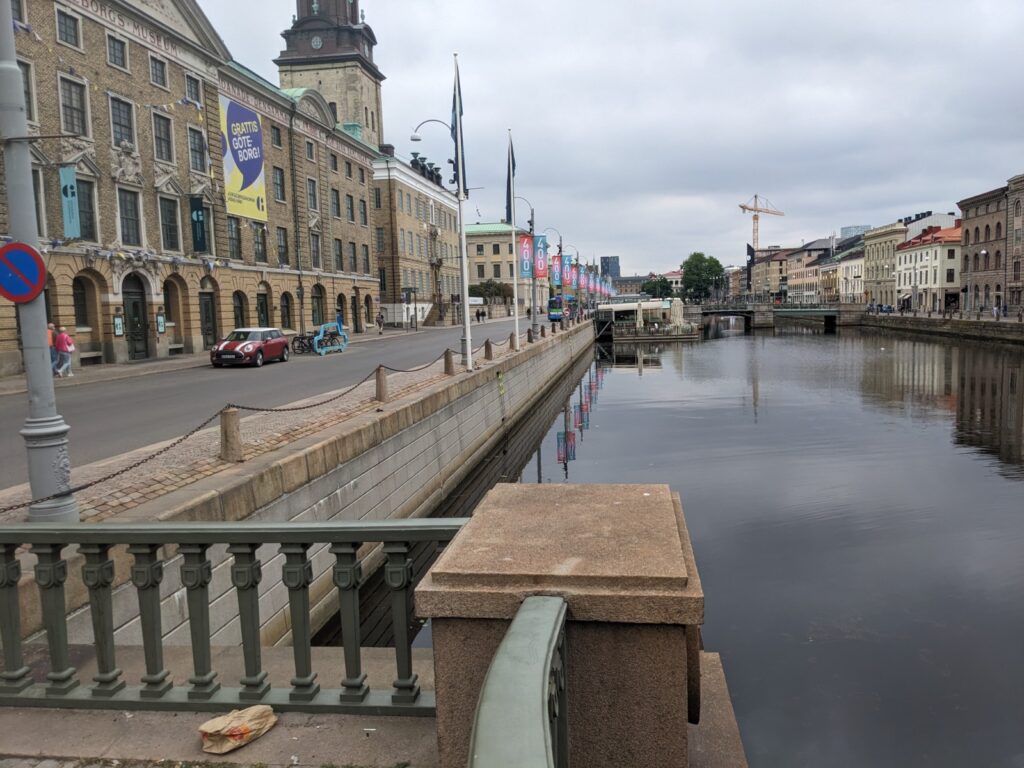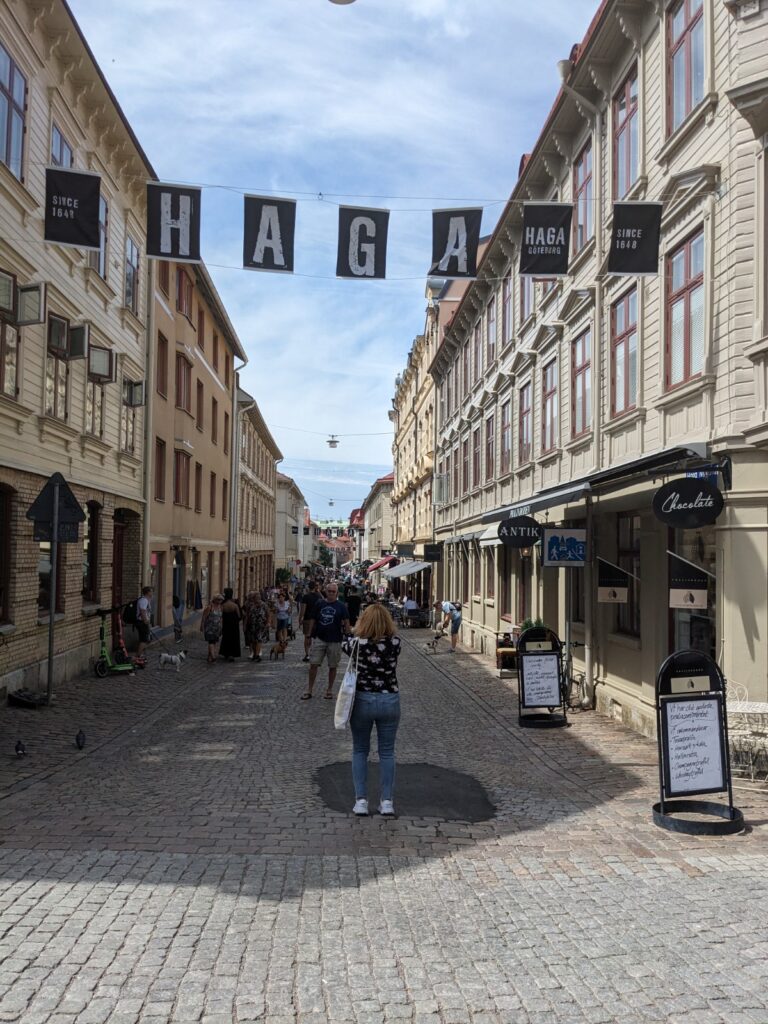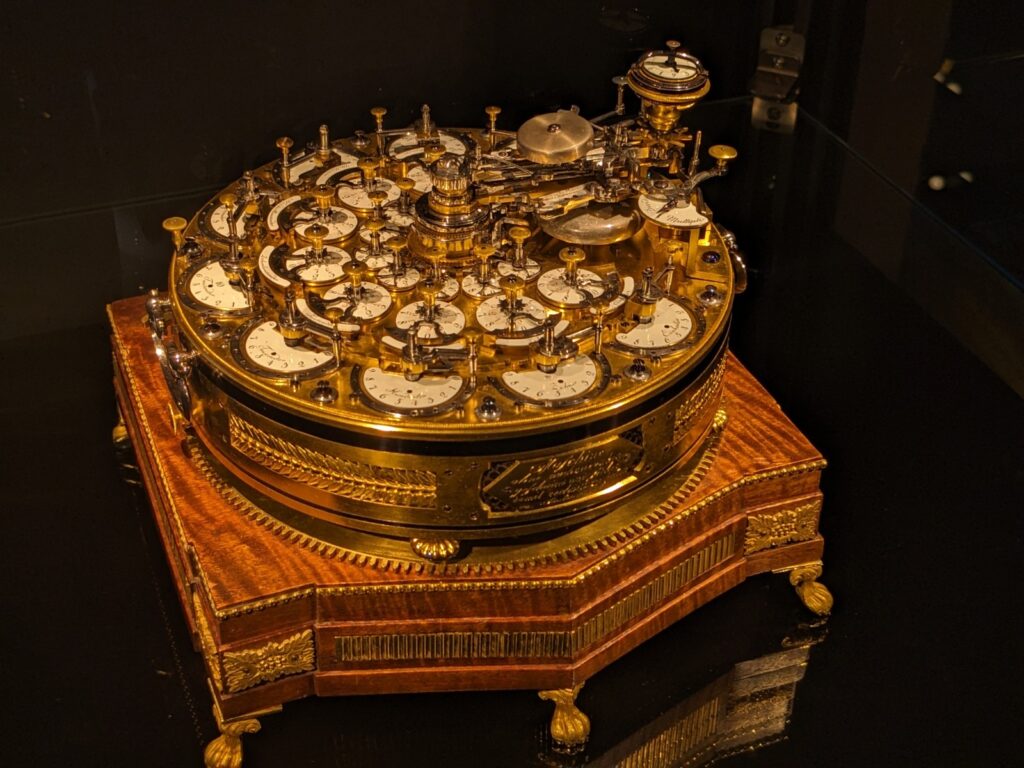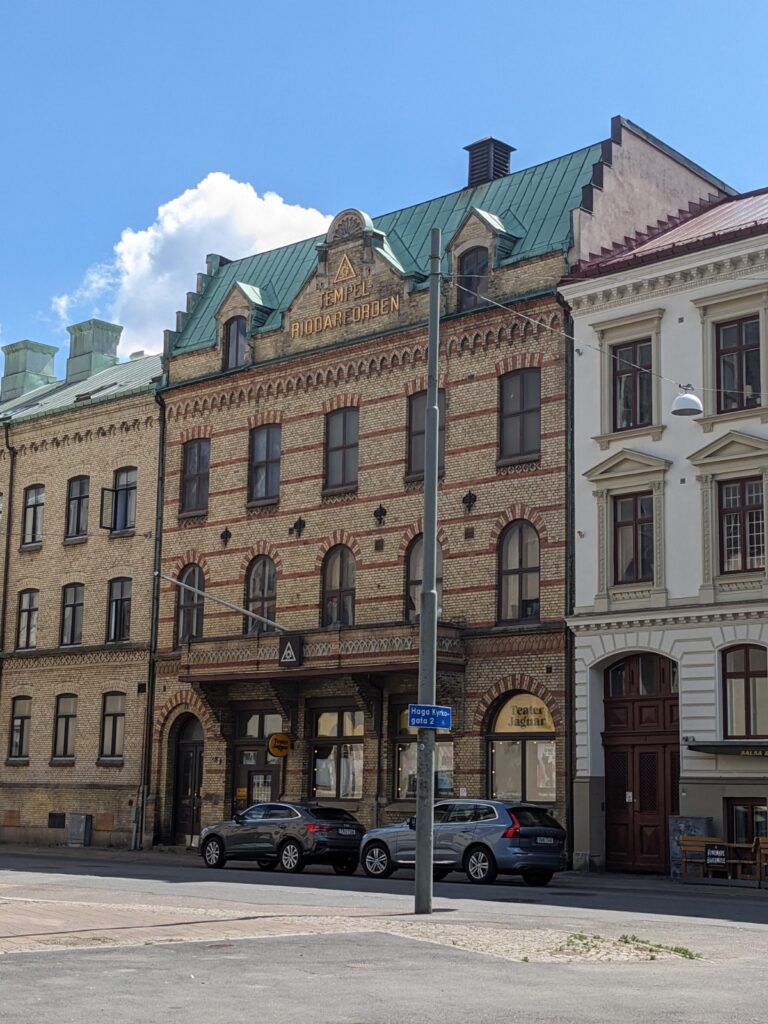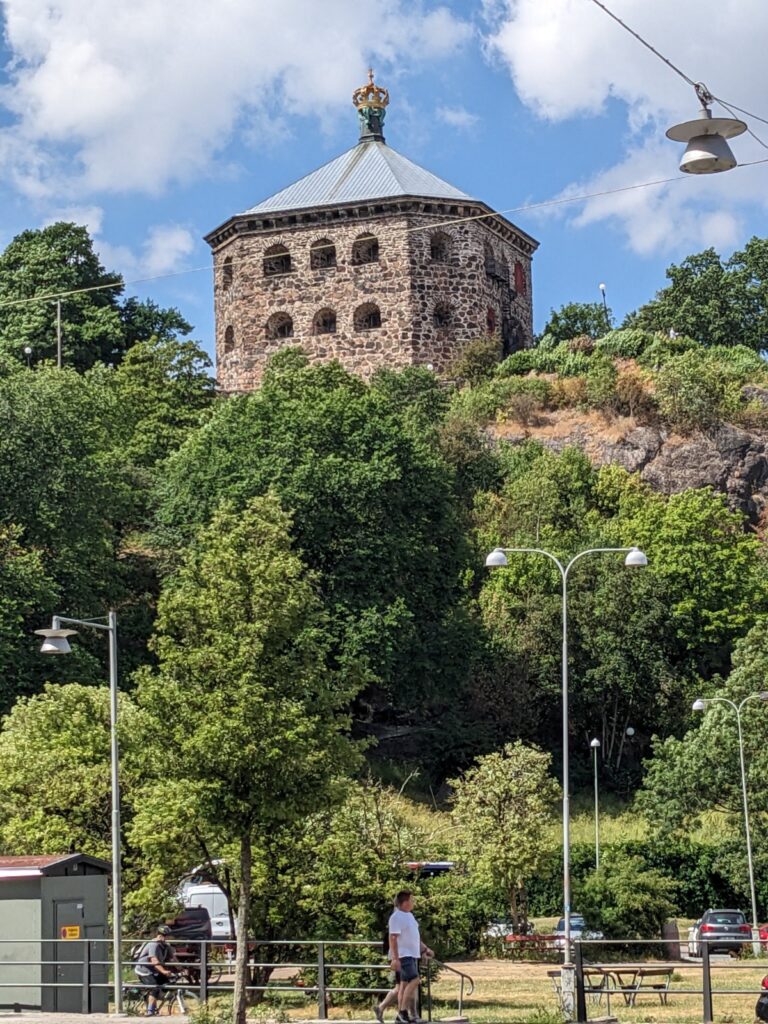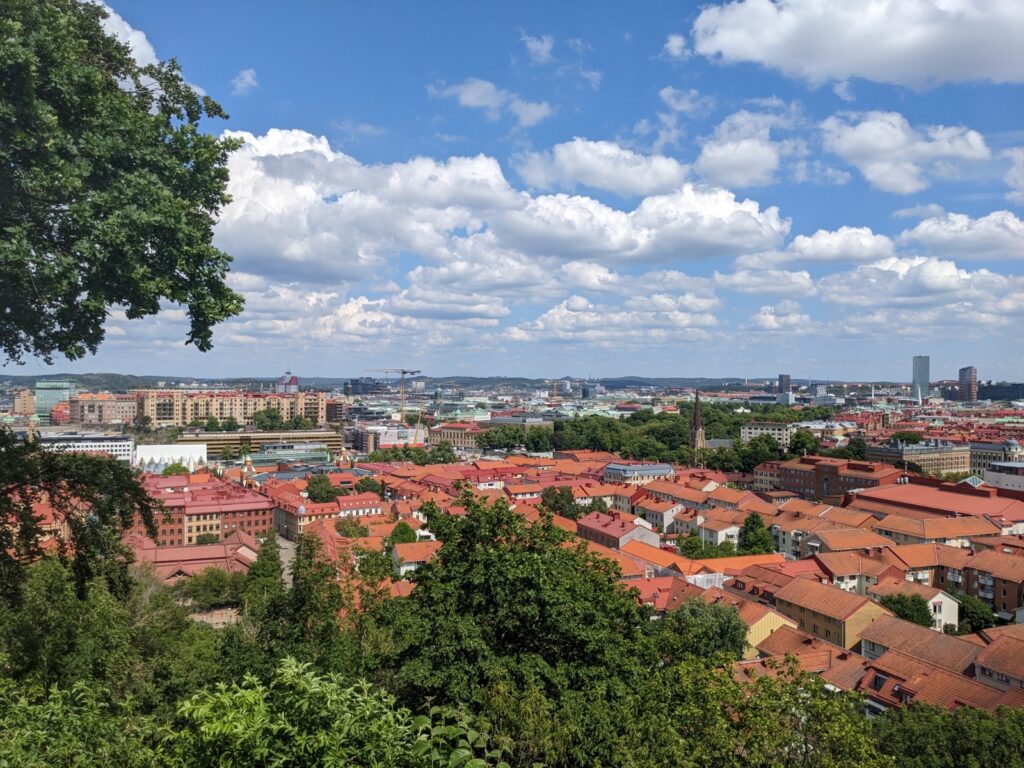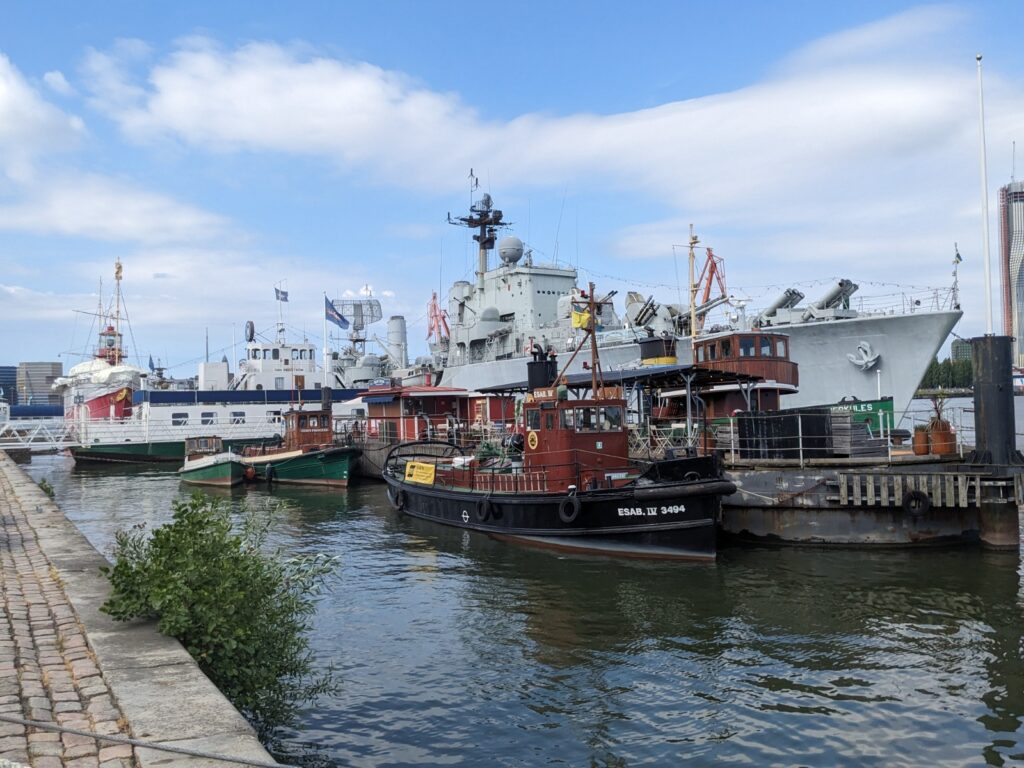June 27, 2023
Gothenburg, Sweden
A short trip on a local train across the Øresund, the straight between Copenhagen and Sweden, brought me to Malmo, where I caught a Swedish train to Gothenburg. Or almost to Gothenburg. About five miles out we inexplicably stopped and the passengers were all loaded onto busses that took us to the Gothenburg train station.
While not nearly as grand and bustling as Copenhagen, Gothenburg is a beautiful place with fascinating history and a pleasant city to hang out in for a few days. After four noisy and hot nights in the Copenhagen hostel, I stayed in the wonderful, quiet, modern, air conditioned Hotel Riverton – at exactly three times the cost of the hostel. By the time I booked, it was one of the cheapest options.
Gothenburg was a major trading center from the 16th century on. While Stockholm focused on trade with Russia and the Baltics, Gothenburg focused on trade with Denmark, the Hanseatic League, and England. Several artificial canals lead away from the harbor and trading houses once lined them.
It is summer in Scandinavia, and people are out in droves. Even more so than Copenhagen, there are many streets that are pedestrian only. One thing I noticed here was the many restaurants and bars with outdoor seating had a large basket of blankets near the door. Never while I was there was it cool enough to want a blanket, but I suppose people want to continue to eat outdoors even in shoulder seasons or occasional chilly nights.
The Stad Museet (City Museum) was excellent and gave a good idea of the maritime and trading history of the city. The most curious thing there was Sauter’s Calculating Machine. Believed to be from about 1796, it is capable of addition, subtraction, multiplication, and division. Purely wonder and aesthetically beautiful.
I wanted to hike up to the Skansen Kronan tower, built around 1700 and found several curiosities on the way.
Graffiti or art?
L. Ron Hubbard, alive and well in Sweden.
Now here was a true oddity. The Tempel Riddare Orden is part of the Templars of Order and Temperance, an American creation from 1845 which split from the older Sons of Temperance because the latter had inadequately elaborate ritual. We certainly do seem to export the best parts of our culture: 7-11 stores, McDonalds, Starbucks, and ritualistic temperance. Based on my experience in Sweden, the temperance thing didn’t much take hold.
The Skansen Kronan tower, built as a redoubt to protect Gothenburg.
View of Gothenburg from Skansen Kronan.
One pleasant surprise that I hadn’t seen in my pre-trip research was the Maritiman Museum of ships, featuring a 400′ destroyer from 1956. It also included the 1875 “Monitor” named Solve. I’m guessing the class was named for the famous Civil War ironclad USS Monitor, as it was, indeed, an ironclad. Built in 1875, it was surprisingly still in use by Mobil Oil into the 1980s. What a novelty to be able to walk through an 1875 ironclad!
The gem of the “fleet” there was the Smaland, a Swedish Navy destroyer in service from the late 1950s through 1979. It was quite cool walking throughout the largish ship and seeing everything from engine rooms, missile storage, crew quarters, and command center. Cramped, with tight passages, and slightly claustrophobic. Hard to imagine living on it.
One humorous display talked about a time in the seventies when the ship was to visit Oslo, Norway. The officers were embarrassed by the sometimes shoulder-length hair on some of the sailors. What would the Norwegians think?! They tried paying money to the sailors to get haircuts, but few took them up on the offer. Scandalous!
Captain of the Ship. (Or at least of his plans for the morning).

